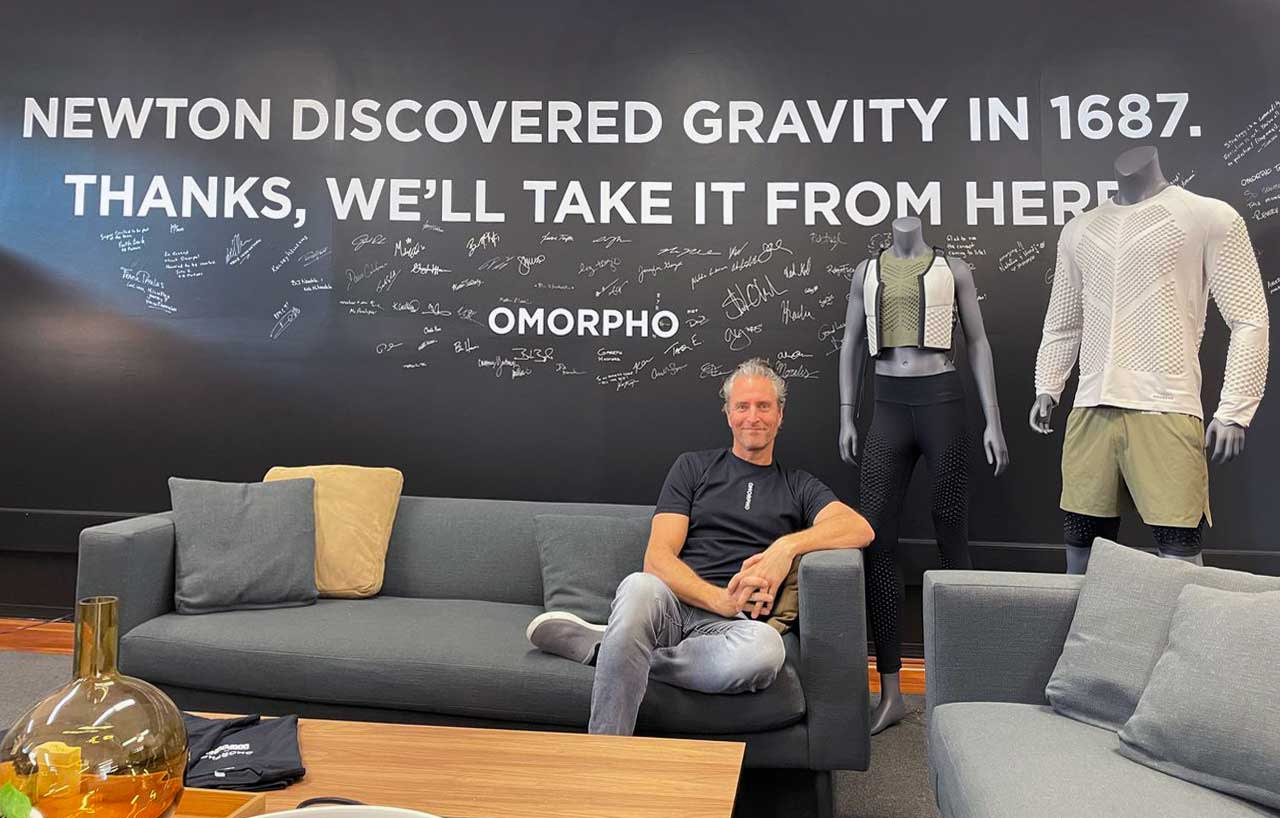Here at OMORPHO, we routinely discuss the benefits of microloading (or wearable resistance) on performance. Let’s start by answering the question: What is microloading? Simply defined, microloading is the application of small amounts of weight to gradually increase resistance. Microloading helps you build strength, power and endurance by increasing the challenge to active muscles.
At OMORPHO we’ve taken it a step further with our proprietary MicroLoad™ G-Wear and weighted G-Vest. This unique application of weight, MicroLoad™ , takes into account decades of scientific research that benefits the user with measurable performance benefits without impacting natural movement. OMORPHO products increase the effectiveness of your training by changing what you wear..

We’ve gone into detail about the science of microloading, or wearable resistance on our Science page, and it’s a subject we get asked about a lot, including its origins. In fact, studies about it have existed for decades. Our goal is to be on the cutting edge of this research and continually innovate. In the process, we aim to provide wearable resistance for everyone, from everyday fitness enthusiasts to professional athletes.
Here are three things to know about the history of microloading.
1. MicroLoad™ has been studied since at least the 1980s.
The concept of microloading (wearable resistance) isn’t a new discovery. A study published in 1985 by the American College of Sports Medicine focused on 15 male runners at Pennsylvania State University who wore approximately 1-2 pounds of weight on their thighs and feet. The Penn State biomechanics laboratory found increased physiological demand that could be attributed to the small amount of added weight.

A year later, the Department of Biology and Physical Activity at the University of Jyväskylä in Finland did a similar study with 14 sprinters who wore weighted vests using 7-8% of their body mass. The vests were used by the experimental group during three to five training sessions per week for three weeks. The control group did the same training sessions without the weight vests. The results showed that the experimental group had significantly improved jumping heights and mechanical power output thanks to microloading.
In 2021, OMORPHO’s Head of Science, Dr. Erin Feser, led a study about the effects of lower-limb wearable resistance with 19 high school American football athletes. The athletes completed pre- and post-intervention testing of two maximal effort 30-meter sprints with 1% of their body mass load attached to their shanks. The results showed that athletes experienced increased velocity measures and suggested that microloading amplified the nuances of the training protocol itself.
There have been many studies about the benefits of microloading that led us to start OMORPHO, and more research is on the way.

2. MicroLoad™ has been proven to burn more calories and increase the challenge to your muscles.
Those early studies we mentioned? They were published at a time when wearable weights often meant bulky, heavy vests and backpacks. Sure, they could help you with your training, but not necessarily in the most effective or efficient way. In some cases, they could even contribute to injury or overuse. That’s why the research behind microloading has been so game-changing. As our CEO Stefan Olander wrote in OMORPHO’s origin story blog post, being put off by clunky, uncomfortable weighted vests, and learning about microloading, was the impetus behind founding OMORPHO and creating better products using MicroLoad™ .
In the years since, we’ve learned that training with MicroLoad™ can give you up to +8% more power and +3% more speed while burning up to +8% more calories. It helps you hone strength, boost cardiovascular fitness and get more out of your workout without adding time or heavier weights. No matter what your fitness goals are, using OMORPHO weighted workout gear with MicroLoad™ increases the effectiveness of your training to gain greater results over time.

3. MicroLoad™ is here to stay.
We’ve talked about the past, and we’ve talked about the present. Now, let’s talk about the future. With more research, particularly on different types of athletes, and with various activities, we will better understand the nuances that make MicroLoad™ so effective.
We do this at OMORPHO by gathering insights from our OMORPHO Crew, a group of athletes and trainers who work out in our wearable resistance products and prototypes. After training in OMORPHO, we’ve had NFL players like Alexander Mattison see noticeable differences in jump height, and Olympians like heptathlete Annie Kunz get more power to shave milliseconds off her times.
You don’t have to be a professional athlete to offer feedback. Our customer service teams regularly share your user comments with our design teams. Together, we’re using decades of scientific findings to make history, and it’s just the beginning!
Subscribe to the OMORPHO newsletter for more stories like this, including How A Weighted Vest Can Improve Your Personal Fitness.

References
- Martin P. Mechanical and physiological responses to lower extremity loading during running. American College of Sports Medicine. 1985; 0195•9131785/1704-0427.
- Bosco C, Rusko H, Hirvonen J. The effect of extra-load conditioning on muscle performance in athletes. American College of Sports Medicine. 1986;0195.9131861806 -04155.
- Feser E, Korfist C, Cronin J. The effects of lower-limb wearable resistance on sprint performance in high school American football athletes: A nine-week training study. Sage Journals. 2021;Volume 16, Issue 5.
- Macadam P, Nuell S, Cronin JB, Diewald S, Neville J. Thigh positioned wearable resistance improves 40 m sprint performance: A longitudinal single case design study. Journal of Australian Strength and Conditioning. 2019;27(04):39-45.
- Feser EH, Korfist C, Lindley K, Bezodis NE, Clark K, Cronin J. The effects of lower-limb wearable resistance on sprint performance in high school American football athletes: A nine-week training study. International Journal of Sports Science and Coaching. 2021; doi: 10.117/17479541211003403.
- Grobler L, Feser E. Changes in cardiovascular and metabolic measures during a moderate-intensity, aerobic exercise session with an Omorpho G-Vest. 2021




